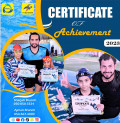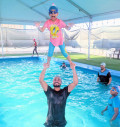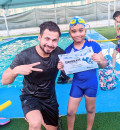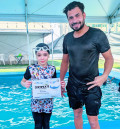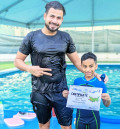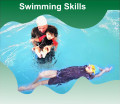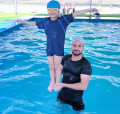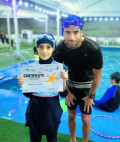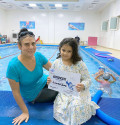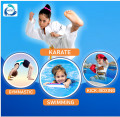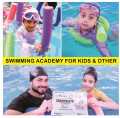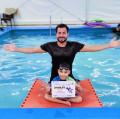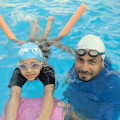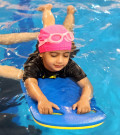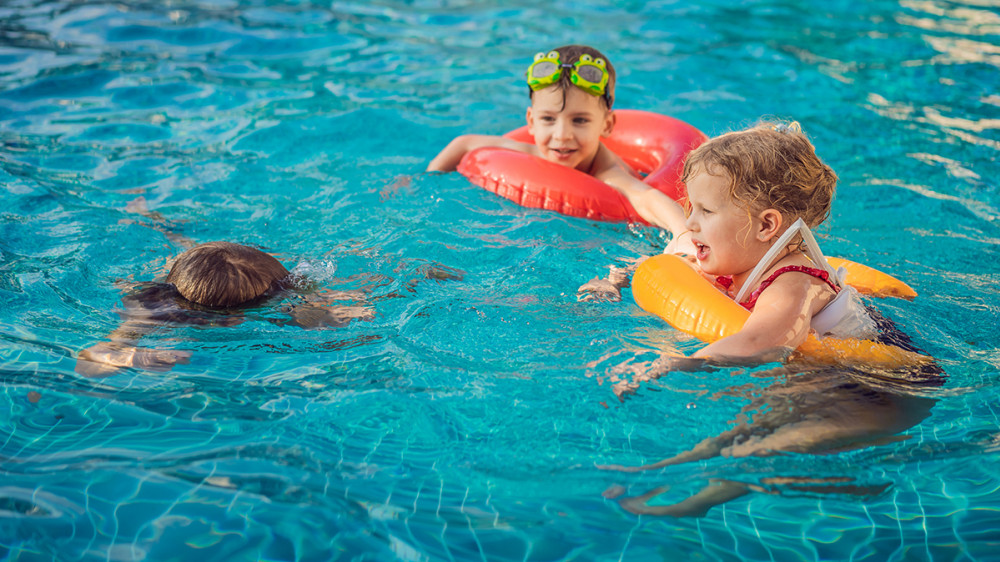
Swimming – An All-Inclusive Fun Package for Children Promoting their Physical, Mental, and Social Development
2022-12-27 - Swimming
Swimming is a valuable life skill that can help prevent drowning and other water-related accidents. Parents must realise that by teaching their child to swim, the child will have the knowledge and skills needed to stay safe in and around water. Teaching their child to swim can allow parents to share an enjoyable experience with their child. There are many reasons why parents must take the initiative to teach their child to swim. By teaching their child to swim, parents can help to ensure their child's safety, promote their physical and mental development, provide them with a fun and enjoyable activity, and support their social development.
Swimming can be a beneficial activity for children's development in several ways:
Social development: COVID-19 pandemic has had a significant impact on children's social development. It disrupted their ability to interact with others in person and participate in group activities. This can be especially challenging for younger children, who may rely more on in-person interactions to develop social skills. One of the most important characteristics of swimming is that it helps to engage in a social activity that encourages children to interact with others and make new friends. It can also help to improve their communication and teamwork skills.
Physical development: Swimming helps to improve children's physical coordination and strength, as it requires the use of multiple muscle groups. It also provides a low-impact cardiovascular workout, which can help to improve cardiovascular health and endurance.
Mental development: Swimming can help to improve children's concentration and focus, as it requires them to pay attention to their surroundings and to follow instructions. It can also be a calming and meditative activity, which can help to reduce stress and improve mental well-being.
Water safety: Swimming lessons can teach children important water safety skills, such as how to float and tread water, which can help to prevent drowning and other water-related accidents.
Swimming is indeed a healthy activity that provides a range of physical, mental, and social benefits for children's development.
Teaching children to swim can be a fun and rewarding experience for both the child and the instructor:
Teaching can be a rewarding experience for a swimming instructor, as it allows them to make a positive impact on the lives of children, witness their progress and achievements, work with a wide range of children, and serve as a role model and mentor.
Some tips that will help a child in getting started are as follows:
- Start by introducing child to the water in a shallow, controlled environment, such as a pool or a supervised swim area.
- Encourage child to splash and play in the water, getting them comfortable with the sensation of being in the water.
- Gradually introduce child to more advanced skills, such as floating and treading water, as they become more comfortable in the water.
- Use flotation devices, such as life jackets or floating noodles, to give the child confidence and support as they learn to swim.
- Use positive reinforcement and encourage the child to try new skills, even if they are not successful at first.
- Be patient and take breaks as needed. Learning to swim can be tiring, especially for young children.
- Remember to always supervise children while they are in the water and make sure they are wearing a properly fitted life jacket when they are in or around bodies of water.
- It is also a good idea to consider enrolling your child in a swim lesson program with a qualified instructor. This can help ensure that your child is learning proper swimming techniques and water safety skills.
Role of Qualified Instructor for a child learning to swim:
A qualified instructor has the knowledge and skills to teach proper swimming techniques and water safety skills and can provide children with the support and guidance they need to feel confident and capable in the water.
A qualified instructor can also provide children with personalized instruction, considering their individual needs and abilities, and can adjust their teaching approach as needed to ensure that children are learning and progressing at a pace that is appropriate for them.
A qualified instructor can also create a safe and supportive environment for children during swimming lessons, ensuring that children are always supervised and are using proper safety equipment, such as life jackets, when needed.
Swimming as a fun activity
Children, especially younger children, may be nervous or hesitant when learning to swim, and it is important to create a supportive and encouraging environment to help them feel comfortable and confident in the water.
Being patient with children during swimming lessons can help to reduce their anxiety and frustration, as it allows them the time and space they need to learn and practice new skills at their own pace.
It is also important to be positive and encouraging with children during swimming lessons. Praising their efforts and celebrating their achievements, even if they are small, can help to boost their confidence and motivation. Using positive reinforcement and encouragement can help to make the lesson more enjoyable and rewarding for children.
It is generally easier for children to learn new skills when they are having fun and are engaged in the learning process. One way to make learning a new skill fun for children is to turn it into a game or challenge. Praising their efforts and celebrating their achievements, even if they are small, can help to boost their confidence and motivation.
Some tips to make swimming lessons fun for kids:
Make it a social activity: Encourage children to interact with their peers during lessons, as this can help to make the experience more enjoyable and social.
Make it interactive: Engage children in the learning process by using interactive activities, such as games and challenges, to teach them new skills.
Use positive reinforcement: Encourage children to try new skills by praising their efforts and providing positive reinforcement.
Use props and toys: Use toys and props, such as pool noodles and kickboards, to make the lesson more fun and engaging.
Take breaks: Allow children to take breaks when needed to rest and recharge.
Mix it up: Vary the activities and skills taught during each lesson to keep things interesting and prevent boredom.
Make it a family activity: Consider involving the whole family in swimming lessons to make it a fun and enjoyable activity for everyone.
Remember to always be patient and positive with children during swimming lessons, as this can help to build their confidence and make the experience more enjoyable for them.
.







.jpg)




















